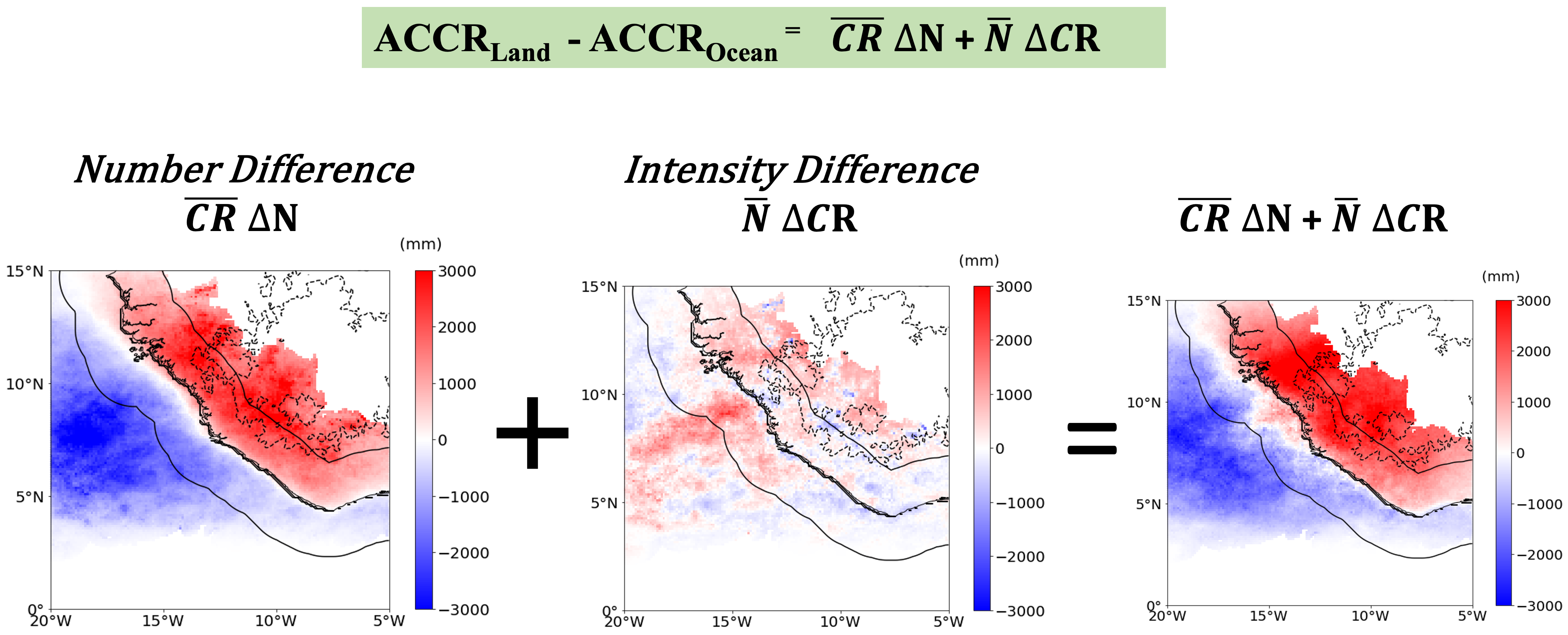MCS Contribution to Rain Maximum over Coastal West Africa

Introduction
Cloud ice water content can serve as a proxy for latent heat release and predict future TC intensification.
Key Points
- More ice cloud in intensifying TCs
- The main differences concentrated within 100 km of the TC center
- The extensive elevated ice water content in intensifying TCs
Project Summary
Latent heating is traditionally considered the main energy source driving TC development. Knowing how much latent heating occurs in a TC can improve our ability to predict its behavior. However, directly measuring latent heating remains challenging. As a workaround, we can use the amount of ice cloud as a proxy for estimating latent heating.
Our results show that intensifying TCs have more cloud ice water content than weakening ones. Furthermore, TCs that intensify rapidly tend to have higher ice content than those that intensify more slowly. These findings emphasize the need to improve both our observation and modeling of ice clouds to enhance TC forecasts.
Publications about this research:
- Nowottnick, E. P., and Coauthors (2024): Dust, Convection, Winds and Waves: The 2022 NASA CPEX-CV Campaign. Bull. Amer. Meteor. Soc. [link]
- Sakaeda, N., Wu, S.-N., and Coauthors (2024): Synoptic Influences on the Diurnal Cycle of Rainfall over Puerto Rico. Mon. Wea. Rev.. [link]
- Wu, S.-N., N. Sakaeda, E. Martin, R. Rios-Berrios, J. Russell (2024): The Contribution of Mesoscale Convective System to the Offshore Rainfall Maximum over West African Coast, Monthly Weather Review. [link]
- Rosimar Rios-Berrios, Naoko Sakaeda, Héctor J Jimenez-González, Angelie Nieves-Jimenez, Yidiana Zayas, Elinor Martin, S.-N. Wu, Cameron R Homeyer, Ernesto Rodríguez (2023): Observing the diurnal cycle of coastal rainfall over western puerto rico in collaboration with university of puerto rico students. Bulletin of the American Meteorological Society, 104 (1), E305 – E324. [link]